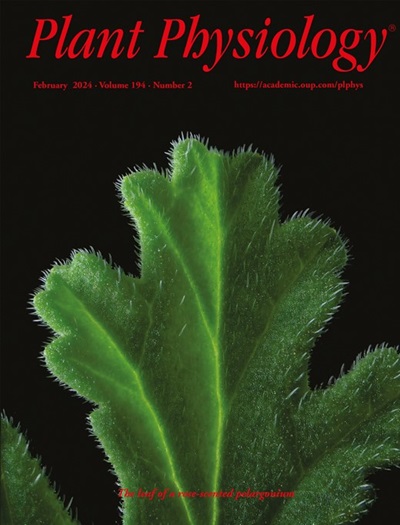The transcription factor Dof32 coordinates salvianolic acid biosynthesis and drought tolerance in Salvia miltiorrhiza
IF 6.9
1区 生物学
Q1 PLANT SCIENCES
引用次数: 0
Abstract
Drought severely impacts plant growth, yet moderate drought stress can stimulate the biosynthesis of active compounds in medicinal plants. However, the molecular regulators and mechanisms linking drought resistance with the accumulation of active compounds remain poorly understood. In this study, we identified the Dof transcription factor SmDof32 as a key regulator of both salvianolic acid biosynthesis and the drought response in Danshen (Salvia miltiorrhiza). Overexpression of SmDof32 enhanced both the accumulation of medicinal compounds and drought resistance, whereas SmDof32 RNA interference resulted in less accumulation of salvianolic acids and diminished drought tolerance. DNA-affinity purification sequencing (DAP-seq) combined with RNA-sequencing (RNA-seq) analysis revealed that SmDof32 directly promotes the expression of lipoxygenase (SmLOX8) and rosmarinic acid synthase (SmRAS1), thereby increasing the biosynthesis of jasmonic acid (JA) and salvianolic acids. Further analysis of SmLOX8 overexpression and RNAi lines confirmed that SmLOX8 promotes JA biosynthesis, enhances drought tolerance, and increases salvianolic acid biosynthesis. Moreover, inhibition of JA biosynthesis significantly reduced the positive effects of SmDof32 on salvianolic acid accumulation and drought tolerance. Collectively, these findings suggest that the SmDof32-SmLOX8/SmRAS1 module plays a crucial role in the drought response and accumulation of salvianolic acids, providing genetic targets for breeding S. miltiorrhiza with enhanced medicinal compound content and drought resilience.转录因子Dof32调控丹参中丹酚酸的合成和抗旱性
干旱严重影响植物生长,但适度的干旱胁迫可以促进药用植物活性物质的生物合成。然而,分子调控和机制连接抗旱性与活性化合物的积累仍然知之甚少。在这项研究中,我们发现Dof转录因子SmDof32是丹参(丹参)丹酚酸生物合成和干旱响应的关键调控因子。SmDof32的过表达增加了药用化合物的积累和抗旱性,而SmDof32 RNA干扰导致丹酚酸积累减少和抗旱性降低。dna亲和纯化测序(DAP-seq)结合rna测序(RNA-seq)分析发现SmDof32直接促进脂氧合酶(SmLOX8)和迷迭香酸合成酶(SmRAS1)的表达,从而增加茉莉酸(JA)和丹酚酸的生物合成。进一步分析SmLOX8过表达和RNAi系证实SmLOX8促进JA生物合成,增强耐旱性,增加丹酚酸生物合成。此外,抑制JA生物合成显著降低了SmDof32对丹酚酸积累和耐旱性的积极作用。综上所述,SmDof32-SmLOX8/SmRAS1基因模块在干旱响应和丹酚酸积累中起着至关重要的作用,为培育具有更高药用化合物含量和抗旱性的丹参提供了遗传靶点。
本文章由计算机程序翻译,如有差异,请以英文原文为准。
求助全文
约1分钟内获得全文
求助全文
来源期刊

Plant Physiology
生物-植物科学
CiteScore
12.20
自引率
5.40%
发文量
535
审稿时长
2.3 months
期刊介绍:
Plant Physiology® is a distinguished and highly respected journal with a rich history dating back to its establishment in 1926. It stands as a leading international publication in the field of plant biology, covering a comprehensive range of topics from the molecular and structural aspects of plant life to systems biology and ecophysiology. Recognized as the most highly cited journal in plant sciences, Plant Physiology® is a testament to its commitment to excellence and the dissemination of groundbreaking research.
As the official publication of the American Society of Plant Biologists, Plant Physiology® upholds rigorous peer-review standards, ensuring that the scientific community receives the highest quality research. The journal releases 12 issues annually, providing a steady stream of new findings and insights to its readership.
 求助内容:
求助内容: 应助结果提醒方式:
应助结果提醒方式:


